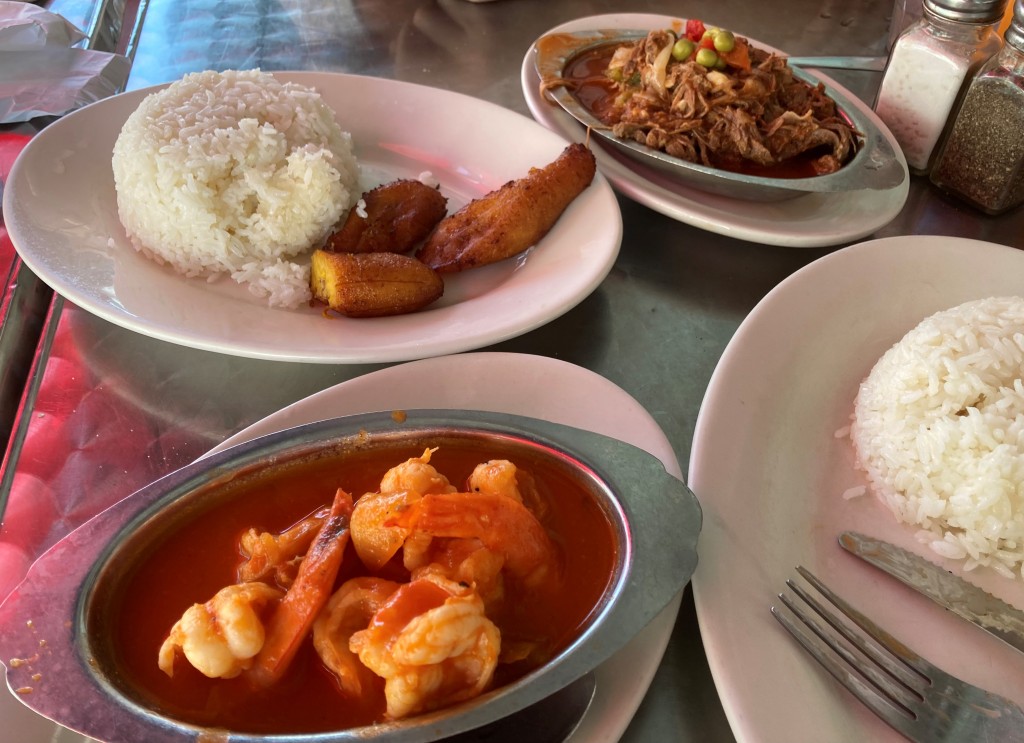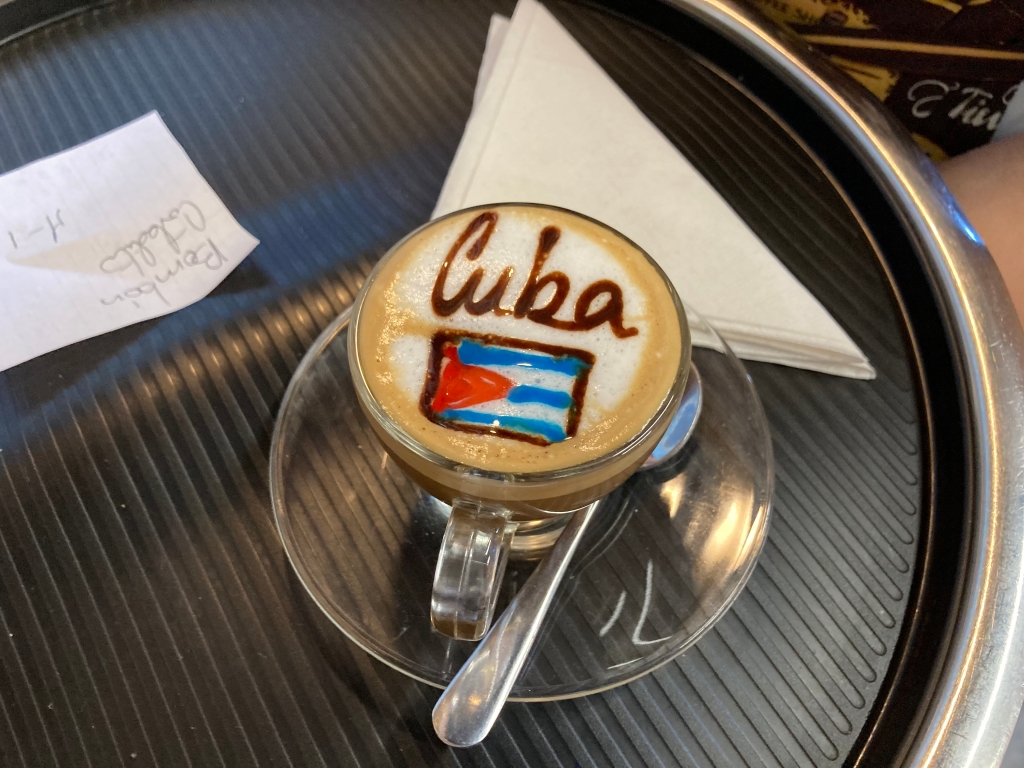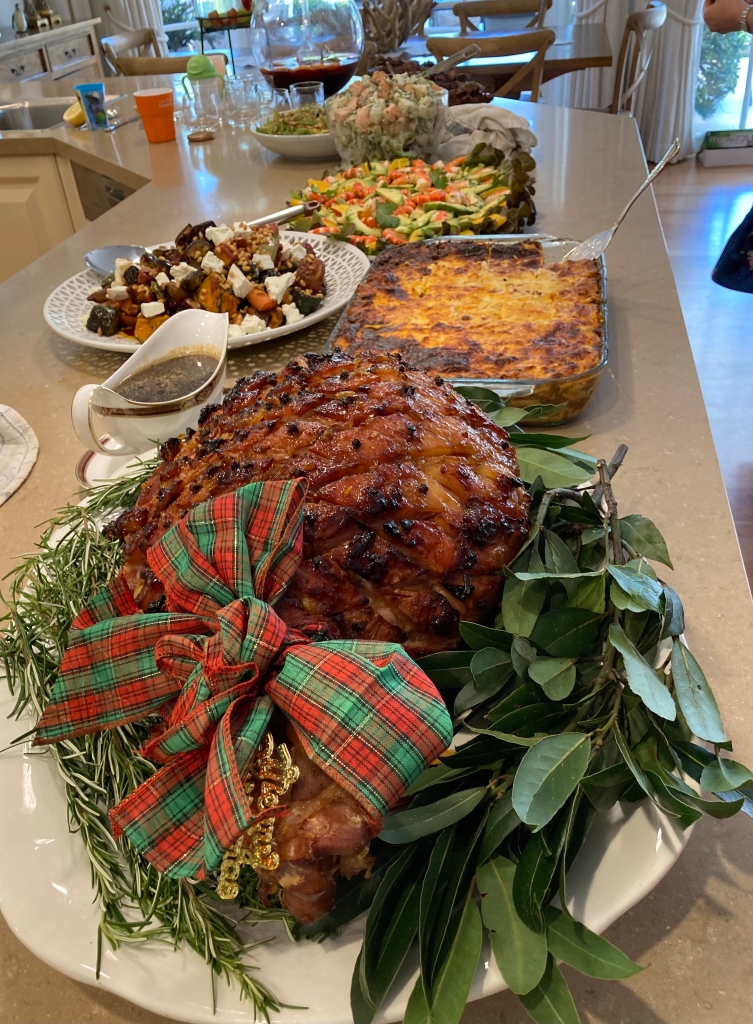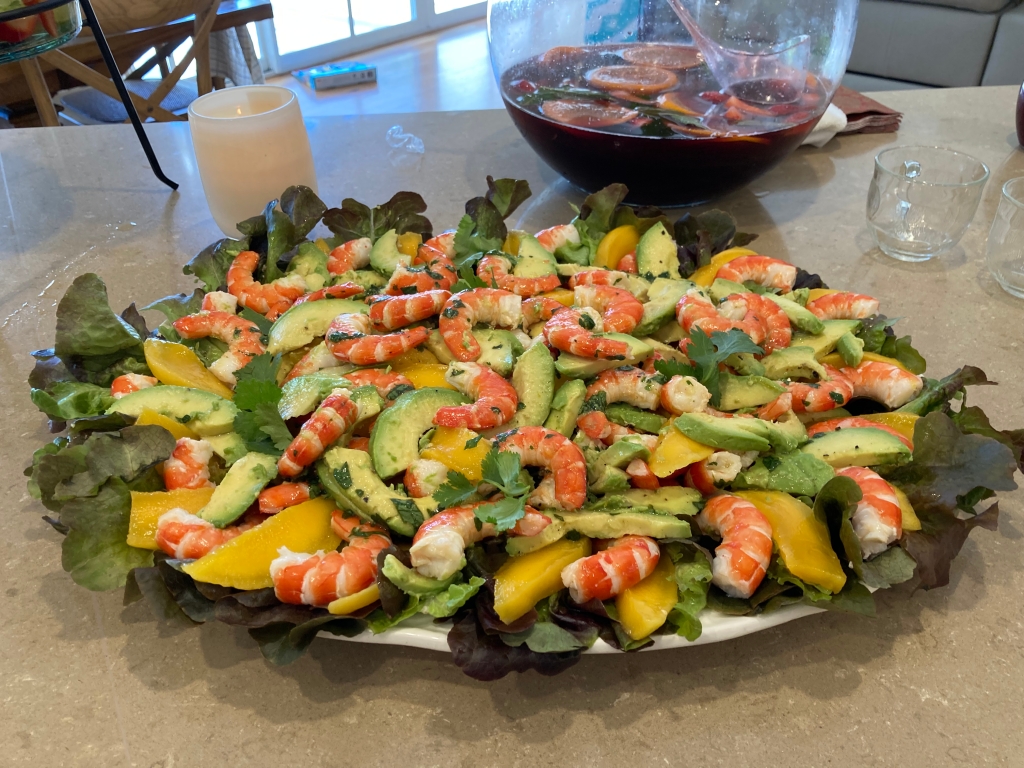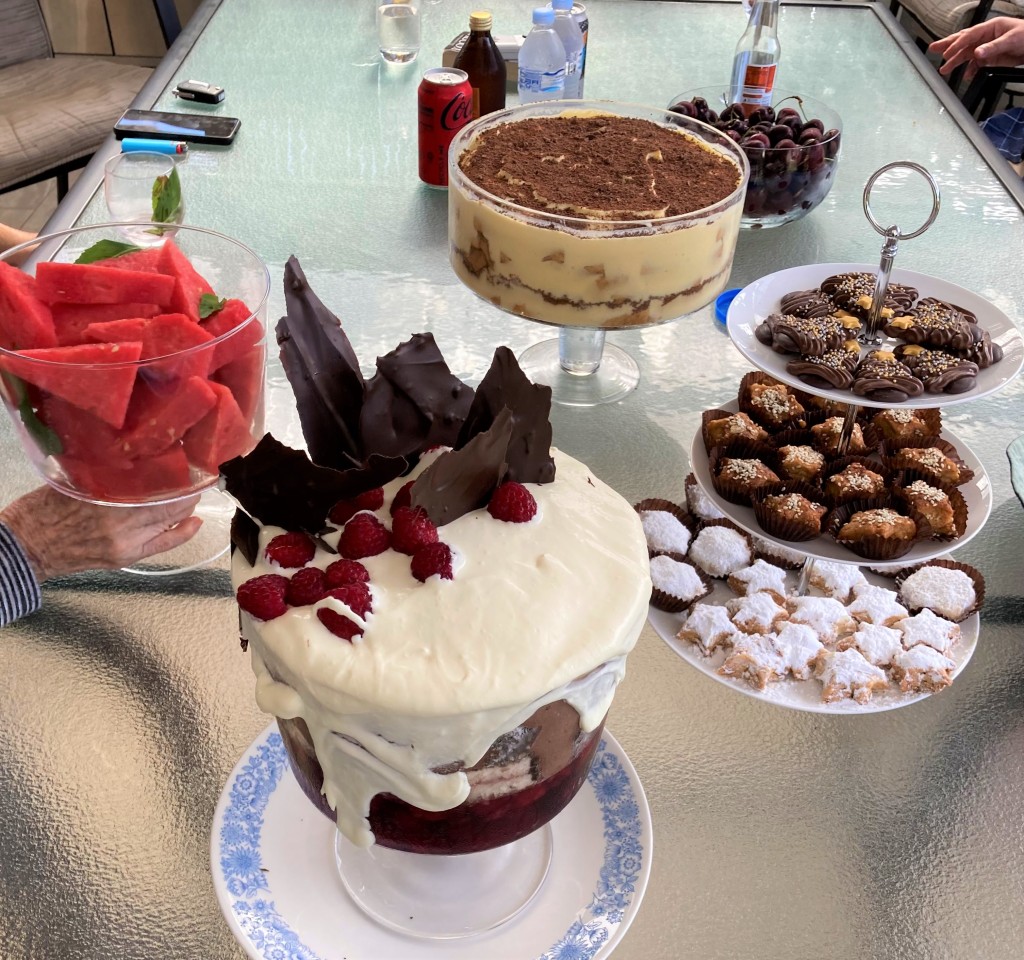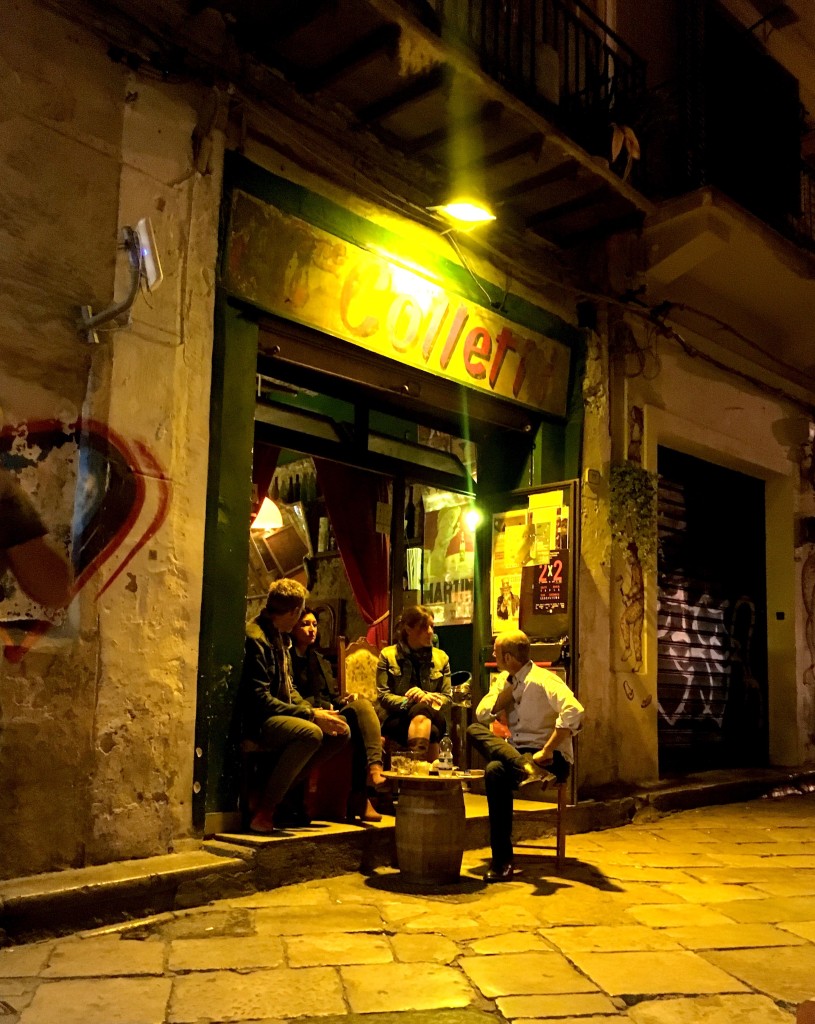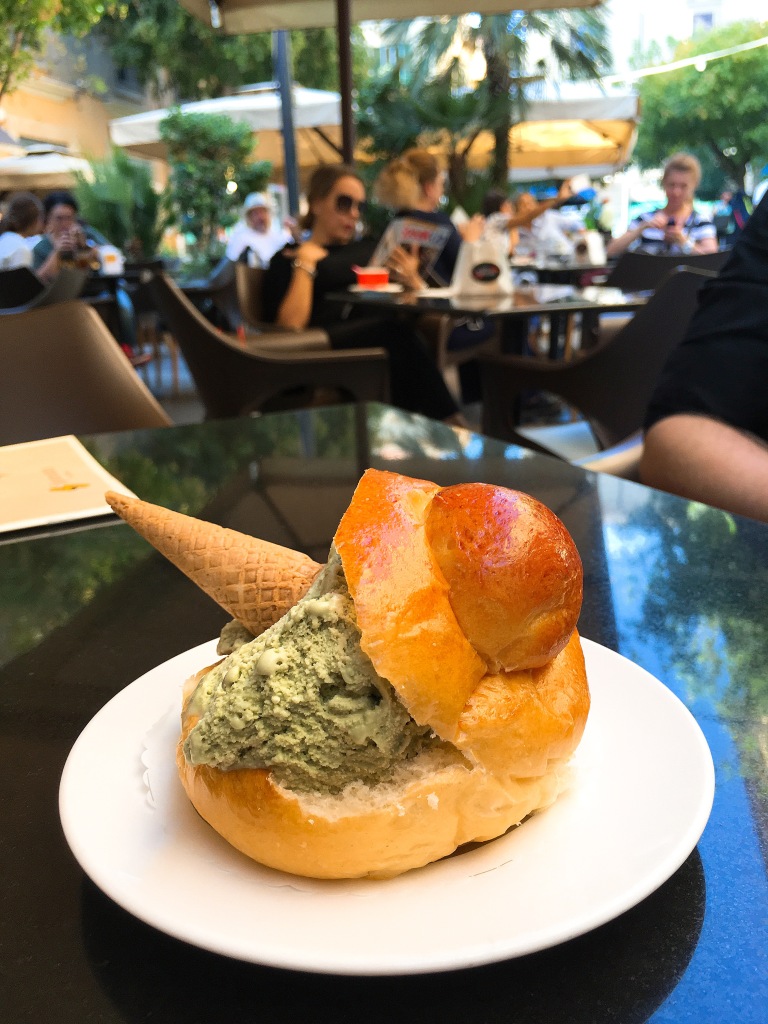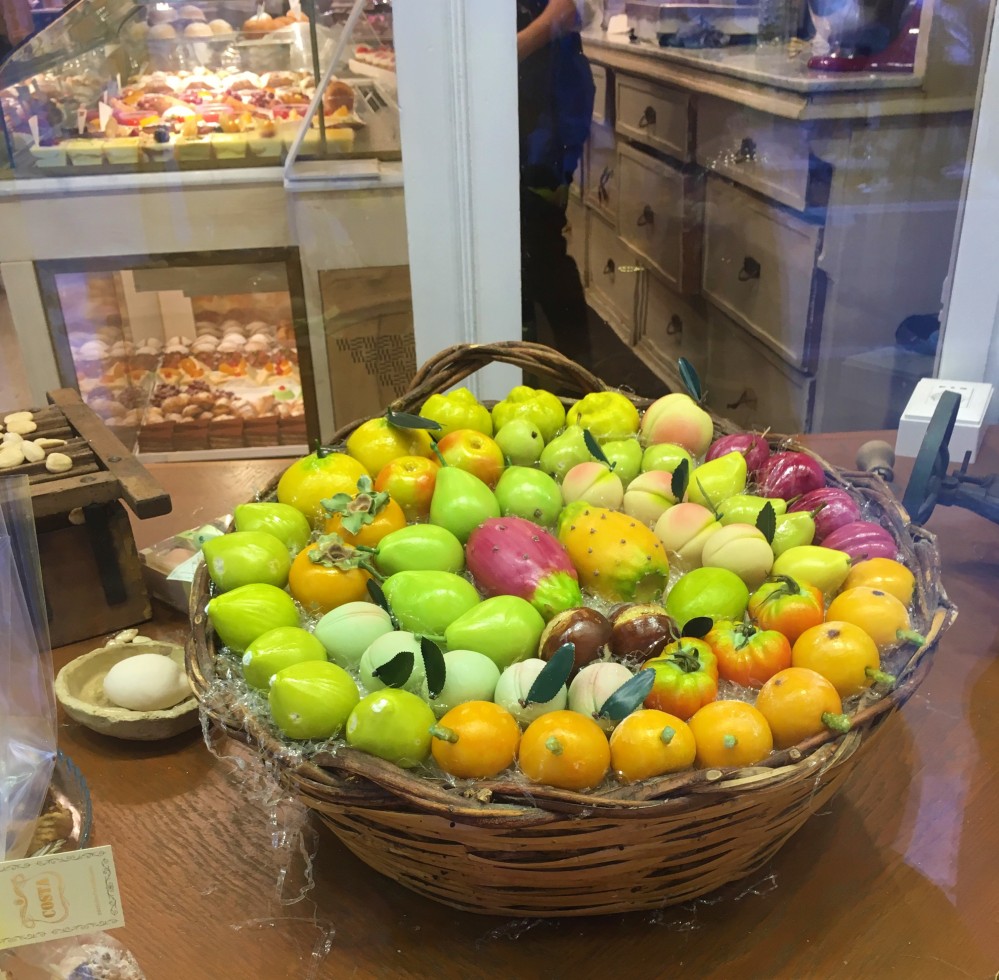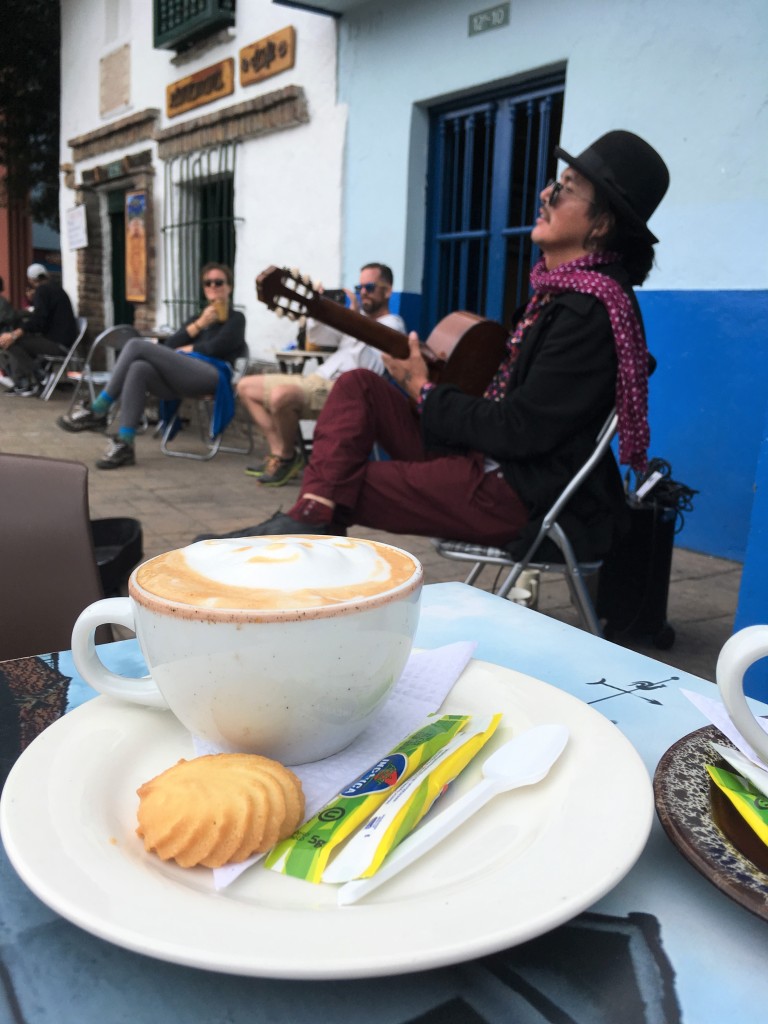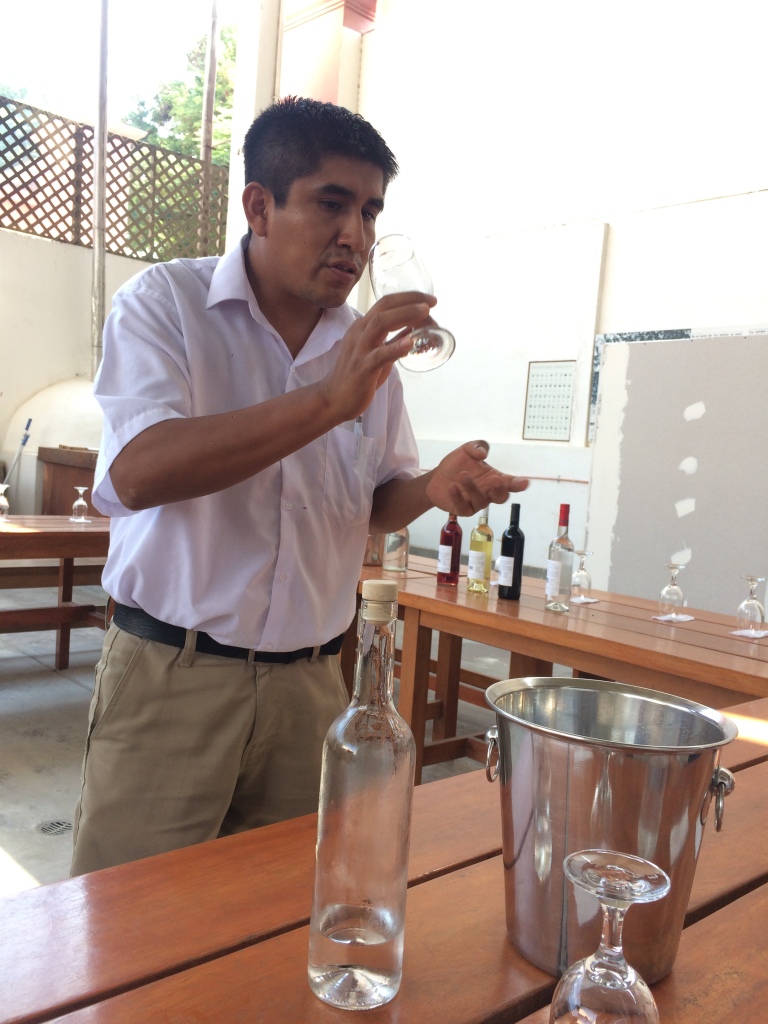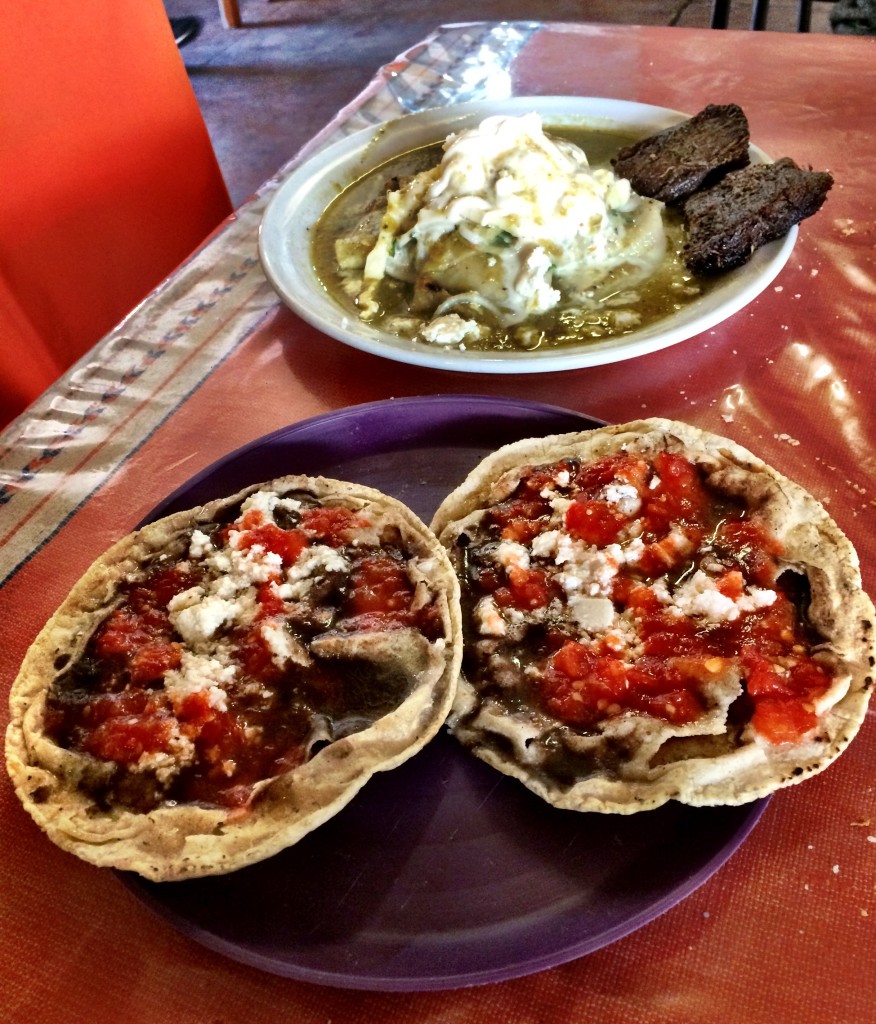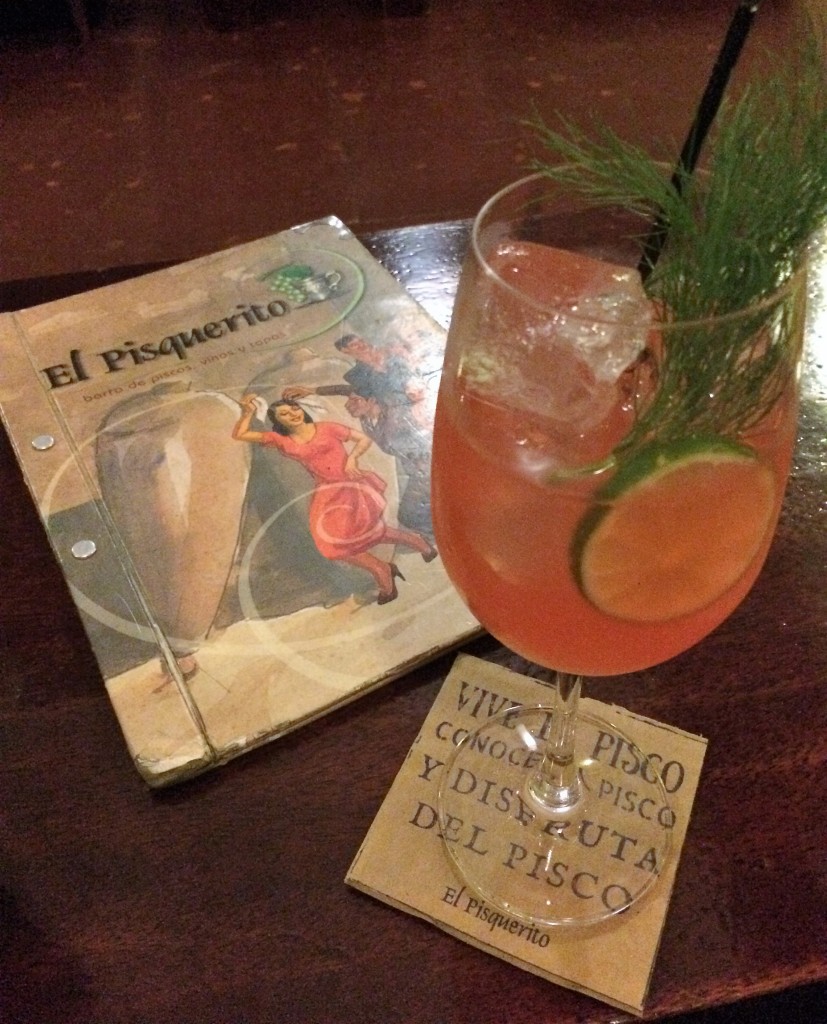Hokkaido (Foodie) Highlights

Japan has long been on my tastebuds’ travel hit list.
Sushi, sashimi, okonomiyaki, ramen. These are some of the most perfectly formed dishes in existence.
It’s hardly a surprise that the Japanese discovered and christened the fifth taste – umami. Only this culinary powerhouse could have identified the savoury flavour present in meat broths and fermented products. I can imagine the scientist was slurping on ramen at the precise moment he made this discovery.
Having recently spent time in the -11 temperatures of Hokkaido where three layers of thermals are mandatory at all times, I started to understand how other iconic dishes fit into the wintery landscape. There seemed to be a perfect meal for every snow-laced occasion. These are my 6 favourite finds:

Matcha soft serve
I’d never considered ice-cream to be a winter delicacy before and I certainly never held much regard for soft serve. Until I met Japanese matcha soft serve.
The region of Hokkaido is renowned for its dairy output. The farming conditions are ideal with a cool climate, fresh air and large open pasture for the dairy cows to live. Happy cows make creamy milk which makes a dense, rich and unctuous soft serve that is not even distantly related to the airy industrial whipped stuff I knew.
We spotted soft serve machines all over the place, handy for satiating the thrice-daily habit that quickly emerged. The matcha soft serve is particularly on point, juxtaposing the sweet creaminess and vanilla tones of the milk with the slight bitterness of the green tea. All packaged in a mint green hue that jazzes up any meal, snack break or otherwise random craving.

Crab
Wander around the average fish market and you’ll spot live crabs desperately struggling to escape from their capture. Japanese fish markets are not average however and neither are their crabs. January is the height of crab season in Hokkaido and you couldn’t miss the giant Alaskan, King and hairy crabs lining the stalls of every seafood market.

We wanted a piece of the action so we selected our own hairy crab to eat then and there, with a quick little photo opp first. We hedged our bets by having half of it boiled and half of it barbequed. I was convinced the barbequed crab would be the most flavoursome but I was wrong, it was the boiled crab that was more luscious and juicy. And there was plenty of meat, even from the legs thanks to the enormity of the crab, which had a delicate sweetness. A touch of lemon and the meal was perfection – I’m now spoiled for life.

Crab was always a hit even when it wasn’t plucked from the water a few metres away. One of the most delicious and satiating lunches on the ski fields, introduced to me by George, was the King crab ramen. I’m talking legs of cracked King crab splayed over a steaming bowl of ramen noodles, white miso broth, sweet corn, spring onion and chilli floating on top. Perfection.
Seafood in general
Japan is known for its strong seafood game. The crabs were just the start, everything else we tried in and around the seafood markets was sensational. The Sankaku seafood market in Otaru was our favourite and we settled in to try all the local delicacies.

George was particularly enamored with the sashimi which he declared was “still flapping”. Slivers of prawn, octopus, salmon, tuna, scallop and sea clam were incredibly fresh and virtually melted in the mouth.

The fish we saw pop up on menus time and time again was atka mackerel or ‘hokke’. It’s a fish that spoils easily which is why we always saw it smoked or dried, opened up like a butterfly. It’s a local delicacy to enjoy this fish grilled on a teppan plate and served with rice, miso and pickles, and it became one of our favourite dishes of the trip.
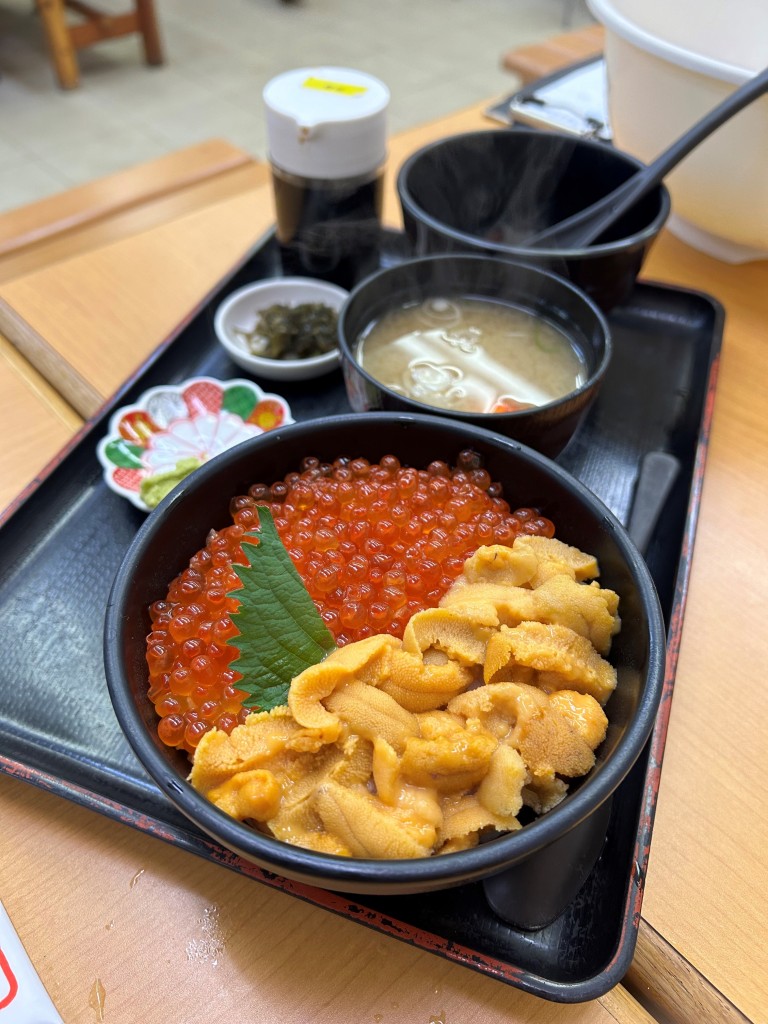
Other seafood highlights included the sea urchin and roe bowl, served atop a bed of rice and with a rich miso.

Ramen
Ramen has long been a cult dish, a noodle soup revered for its umami broth, silky noodles and considered arrangement of braised pork, spring onions, egg, seaweed and bean sprouts. Ramen always tastes good but never more than when you’ve been in seemingly Arctic conditions all day. Then it tastes phenomenal.
We munched our way through the classic bases including shoyu (soy sauce), shio (salt) and miso but it was the creamy tonkotsu made from boiled pork bones that became my go to.

Our favourite ramen experience was undoubtedly in Sapporo’s Ramen Alley, a narrow pathway tucked between two main roads that houses only tiny ramen joints. Each one hosts a maximum of ten people but more often than not just six. We picked one at random and marvelled at how such bowls of deliciousness could emerge from possibly the tiniest kitchen on earth.

We also watched the locals intently to see how they consumed their ramen. As business men knocking off for the day and uni students gearing up for a big night dropped in and out, the one thing they all did was slurp their soup like it was going out of style. This is standard ramen etiquette and apparently the slurping enhances the flavours while cooling down the hot noodles.
We were also bemused when handed a hard-boiled egg right before our soup arrived and watched others intently to see what they did with it. The common trend seemed to be peeling it and adding it to the soup but we also observed one man eat it solo. It seems the art of ramen is all about freestyling as you see fit.
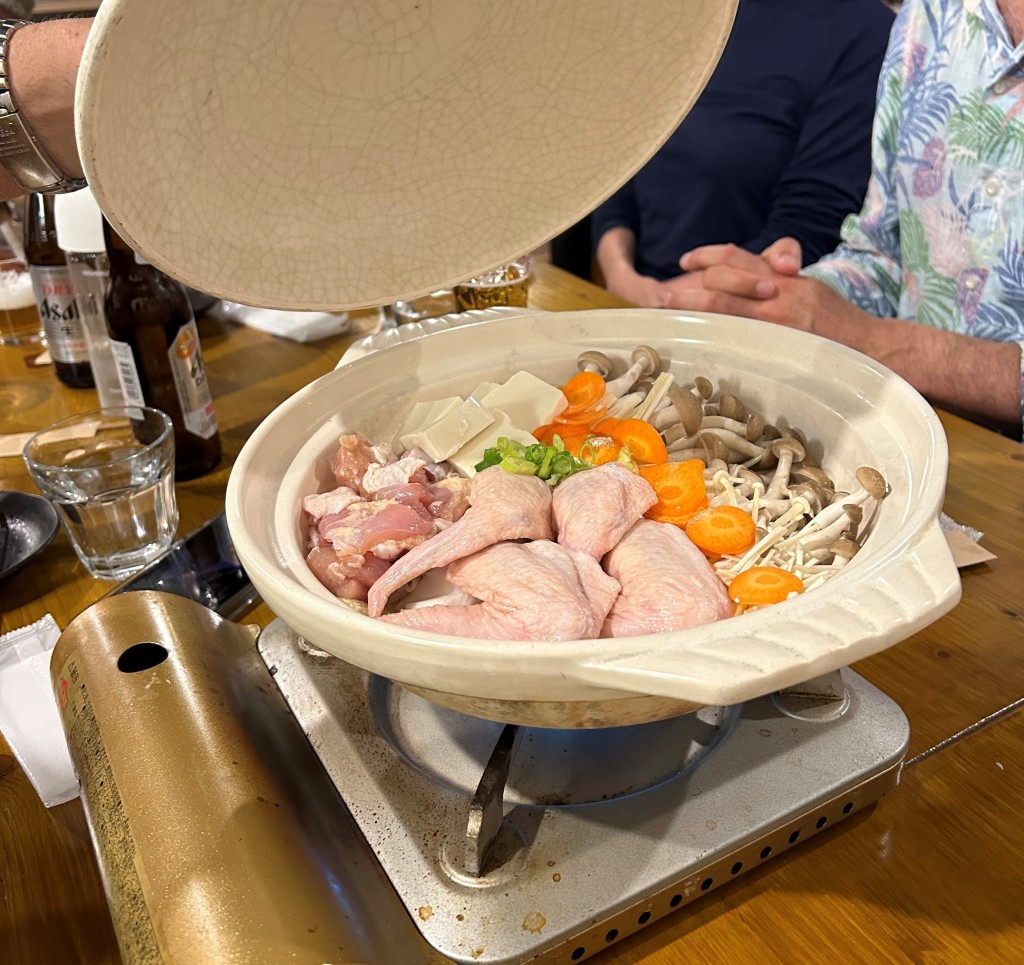
Hot pot
Not to be confused with ramen, hot pot or ‘nabe’ is the other soup that monopolised our palates while in Japan. And it’s easy to see why because in -11 degrees when you’re in a group, hot pot is the answer to all of life’s problems.

The staff only need to know how many of you there are and then almost instantly, a portable gas stove of bubbling stock filled with goodies appears in front of you. It does its thing for about 20 minutes and when you start to see steam spouting from the sides, its work is done. You’re left with a rich soup that always warms and soothes.
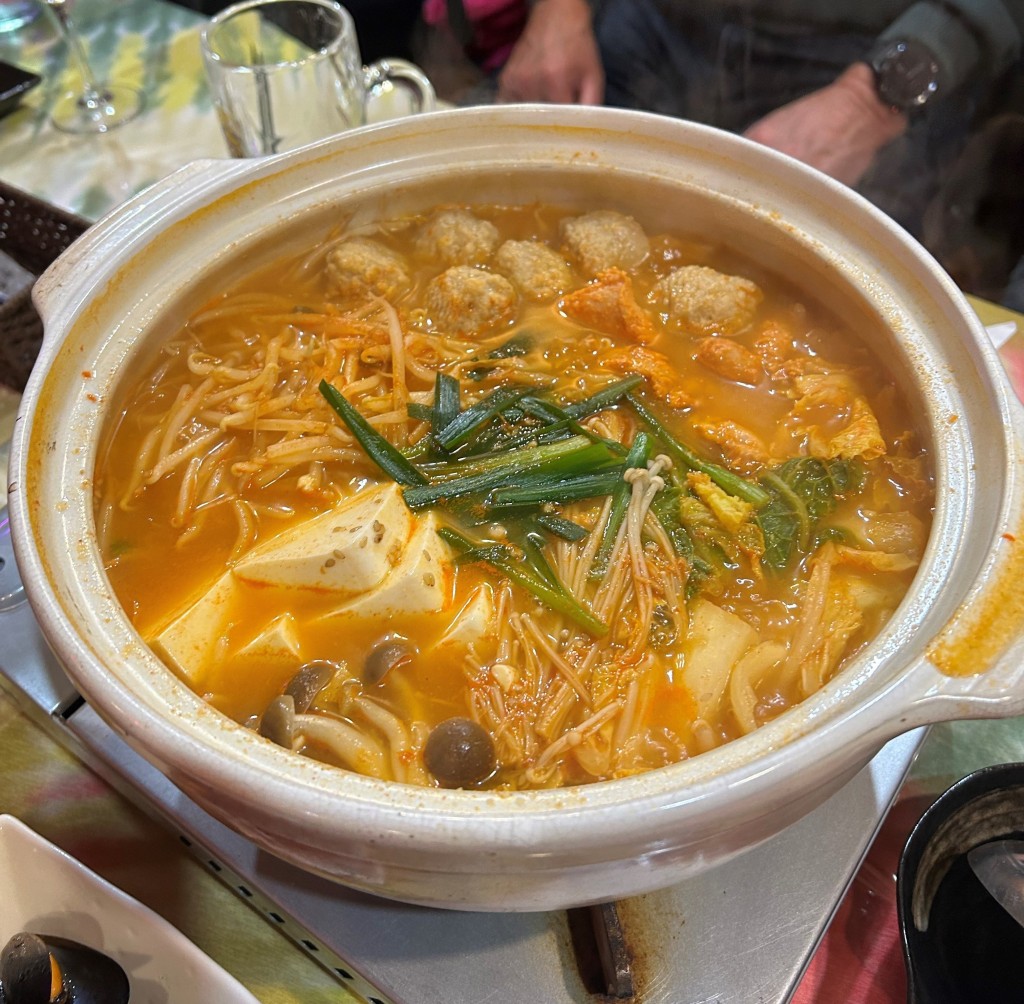
Hot pots typically have green onion, cabbage and mushrooms and then would feature either chicken, beef or seafood. The Rolls Royce for us was the ‘Shabu-Shabu’ we tried in Rusutsu which had thinly sliced wagyu loin, Hokkaido pork and seafood. The term is onomatopoeic, coming from the “swish swish” sound that emerges when the ingredients are stirred in the pot. It came with a ponzu and sesame dipping sauce.

Wagyu
Last but not least is the prized protein of this carnivorous nation, wagyu beef.
It’s one of the most expensive meats in the world, probably because the cows are treated like gods: they are regularly massaged (to relieve stress), their coats brushed with sake and they are fed beer to whet their appetites (in Australia, beer is replaced with red wine). The combined effort creates a unique marbling effect which produces tender and tasty meat.

We went all out and tried A5 wagyu – the highest graded meat on the wagyu scale. It certainly was the most melt-in-the-mouth steak I’d ever tried, selected and served with much fanfare. We tried more pedestrian wagyu also – not quite as spectacular but still a very satisfying steak.
It’s not hard to eat well in Japan. It’s only hard to resist the cornucopia of delights that have been perfected over years and represent the incredible culinary genius of the Japanese people.

















